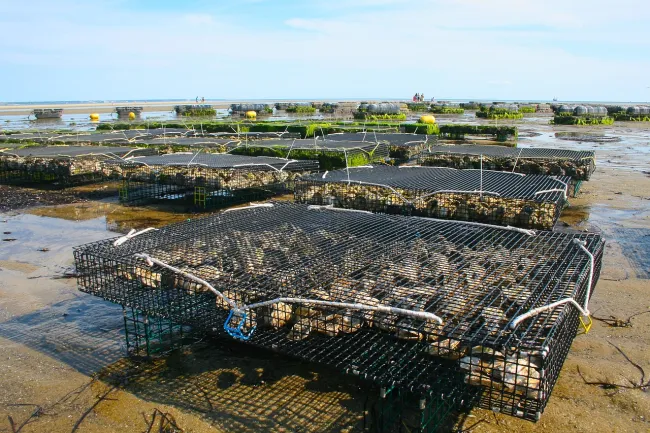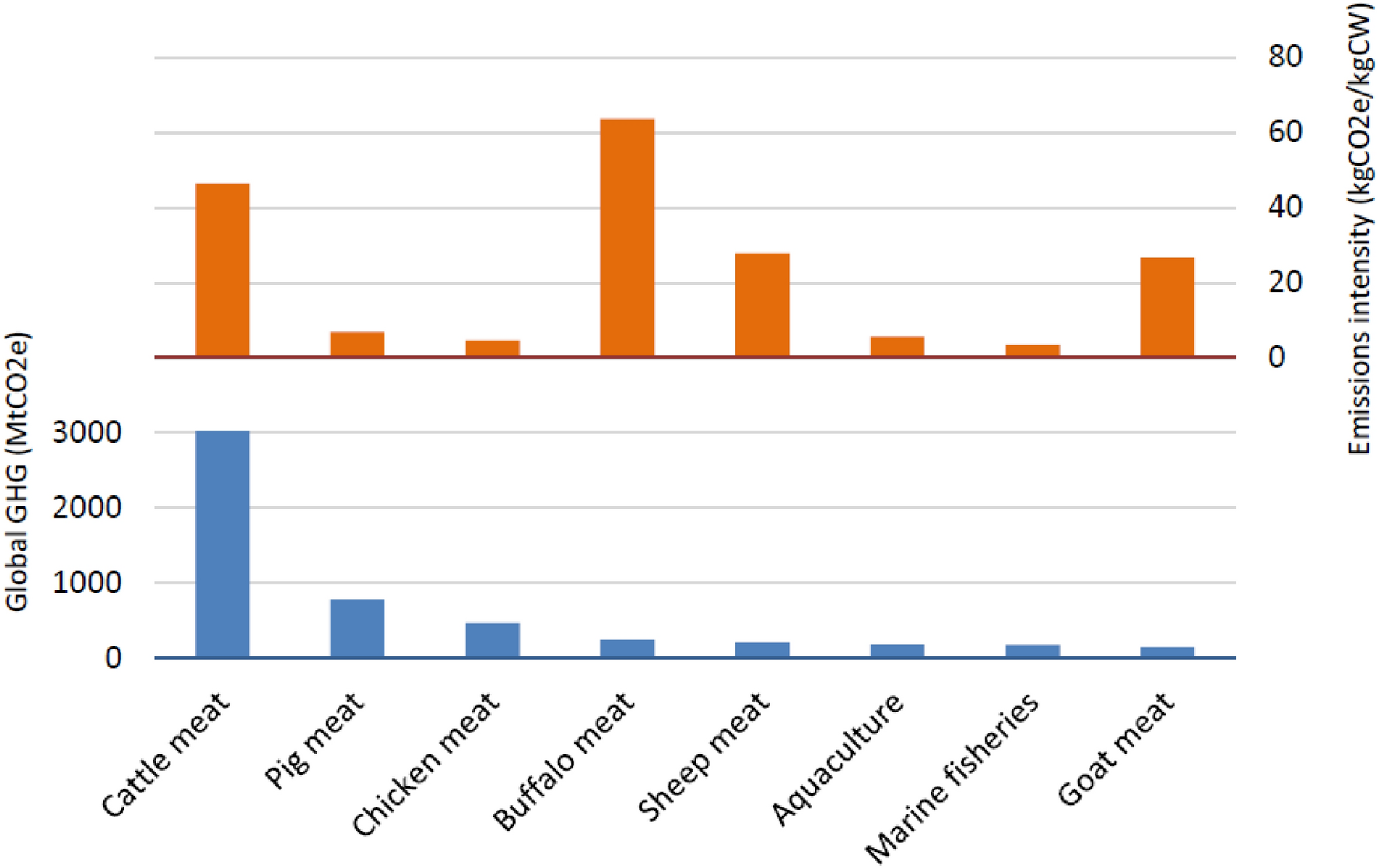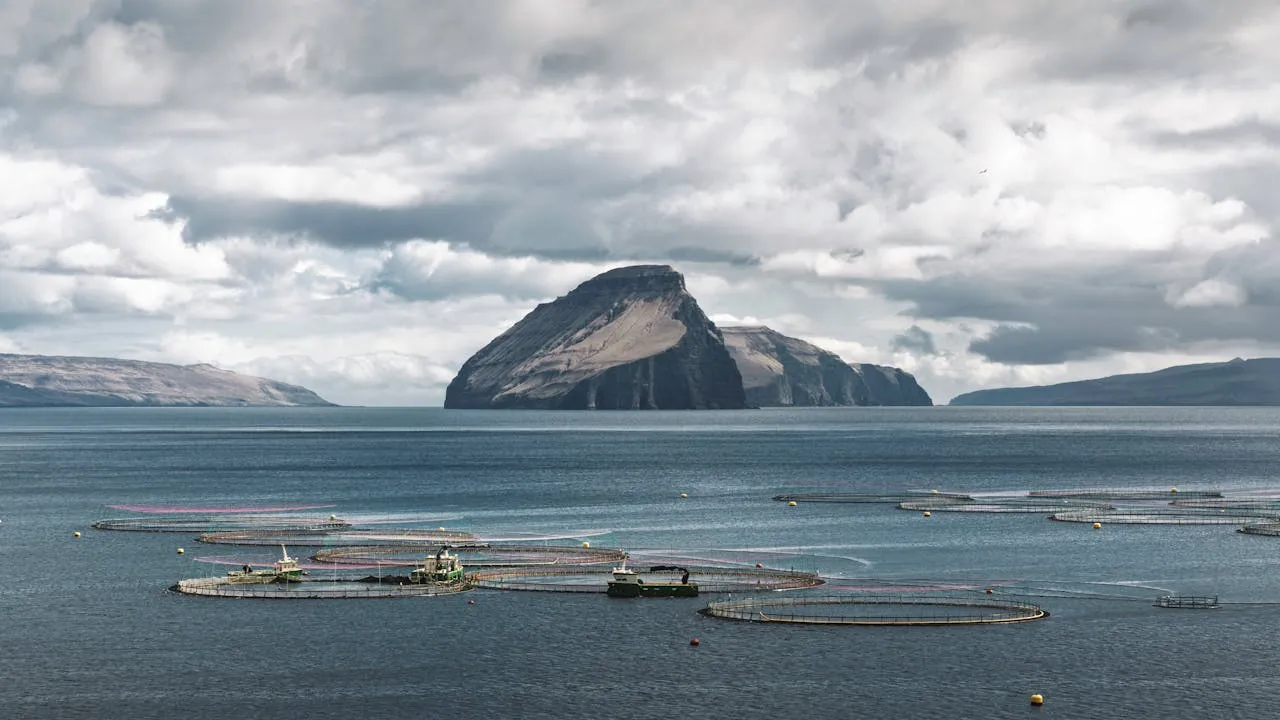In this paper, FCRN member Michael MacLeod reports that global aquaculture produced around 0.49% of global greenhouse gas emissions in 2017 - a similar quantity to the emissions from sheep meat production. When emissions are measured per kg of edible product, the paper finds aquaculture to have low emissions intensity relative to meat from goats, cattle, buffalo and sheep and similar emissions intensity to meat from pigs and chickens.

The figure below shows the absolute emissions and emissions intensity of aquaculture relative to other meat sources.

 Image: Figure 3, MacLeod et al. Total global emissions and emissions intensity of aquaculture (2010), terrestrial meat (2010) and marine fisheries (2011).
Image: Figure 3, MacLeod et al. Total global emissions and emissions intensity of aquaculture (2010), terrestrial meat (2010) and marine fisheries (2011).
The paper attributes the relatively low emissions intensity of aquaculture (compared to ruminant meat) to the lack of methane emissions from the digestive system of fish, higher fertility of fish (so that breeding new animals takes fewer resources) and the relatively efficient use of feed by fish. For a separate discussion on how feed efficiency in fish is measured, see the paper Feed conversion efficiency in aquaculture: do we measure it correctly? See also the FCRN report Lean, green, mean, obscene…? and the Foodsource building block What is environmental efficiency? And is it sustainable?
Abstract
Global aquaculture makes an important contribution to food security directly (by increasing food availability and accessibility) and indirectly (as a driver of economic development). In order to enable sustainable expansion of aquaculture, we need to understand aquaculture’s contribution to global greenhouse gas (GHG) emissions and how it can be mitigated. This study quantifies the global GHG emissions from aquaculture (excluding the farming of aquatic plants), with a focus on using modern, commercial feed formulations for the main species groups and geographic regions. Here we show that global aquaculture accounted for approximately 0.49% of anthropogenic GHG emissions in 2017, which is similar in magnitude to the emissions from sheep production. The modest emissions reflect the low emissions intensity of aquaculture, compared to terrestrial livestock (in particular cattle, sheep and goats), which is due largely to the absence of enteric CH4 in aquaculture, combined with the high fertility and low feed conversion ratios of finfish and shellfish.
Reference
MacLeod, M.J., Hasan, M.R., Robb, D.H.F. and Mamun-Ur-Rashid, M. (2020). Quantifying greenhouse gas emissions from global aquaculture. Scientific Reports, 10, 11679.
Read the full paper here or here (PDF link). See also the Foodsource resource How do food systems affect fish stocks and marine habitats?




Comments (0)